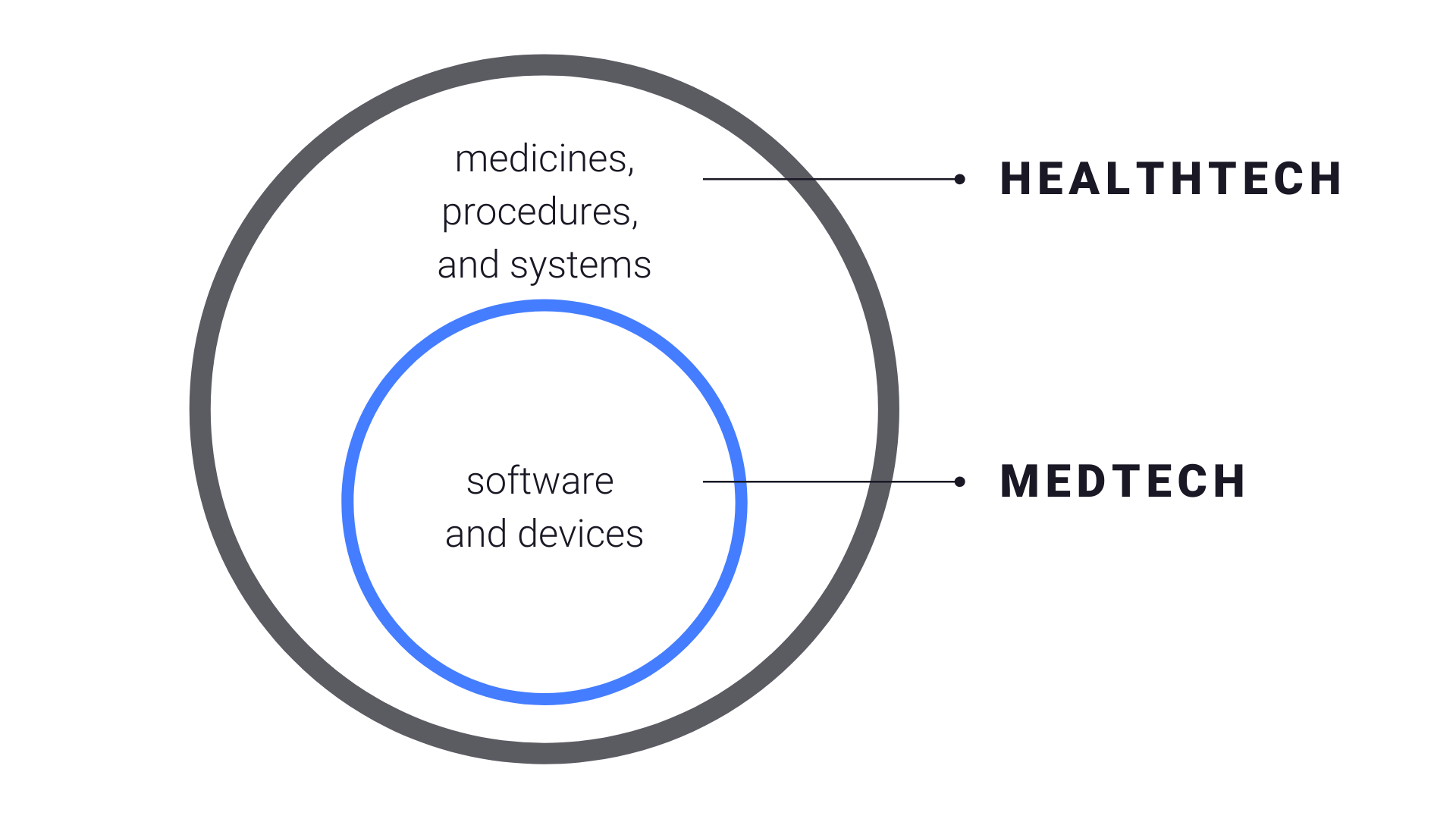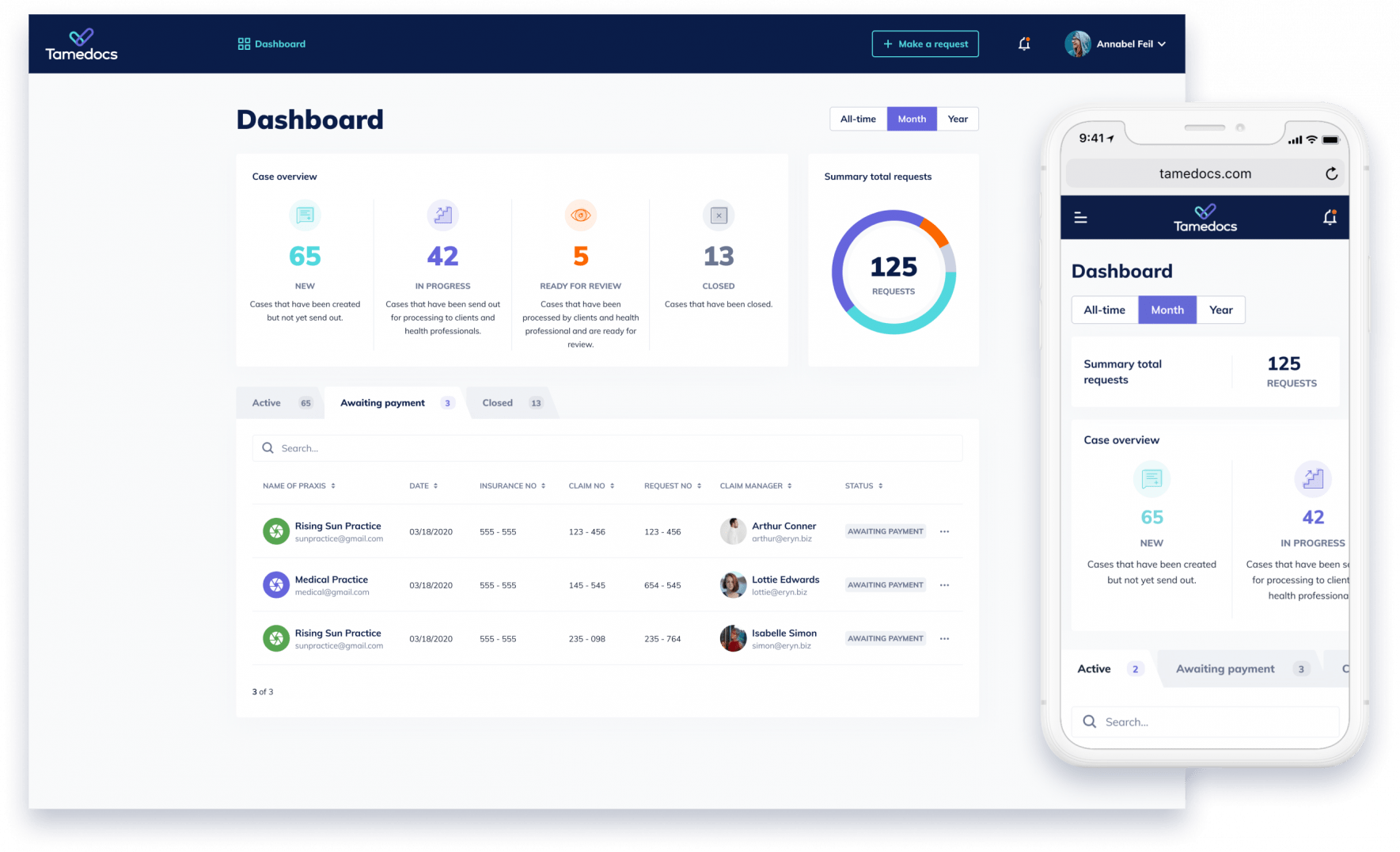What is Healthtech?
‘Healthtech, or digital health, is an umbrella term which refers to the use of technology to improve delivery, payment and/or consumption of care. Healthtech’s main goal is to improve the overall quality of care provided, by boosting hospital productivity, gaining new insights into medicines and treatments or simply making healthcare more accessible.
According to the World Health Organization, Healthtech goes beyond technology to knowledge: it is “the application of organized knowledge and skills in the form of devices, medicines, vaccines, procedures and systems developed to solve a health problem and improve quality of lives”.
In a nutshell, health intersects with technology to enhance all aspects of the healthcare process.
Medtech, Insurtech, Femtech…which is which?
New terms are constantly emerging, making it all the more confusing to understand which is which. So let’s start with the basics. You might be wondering whether Healthtech isn’t just the same as Medtech? Well, not really.
Although some people might use it interchangeably, Medtech is a specific part of Healthtech, which covers therapeutic and diagnostic technologies used by clinicians. While Medtech focuses on the devices and the software itself, Healthtech encompasses the devices, as well as their uses.
Insurtech, as you might have guessed, refers to new insurance technology that improves the customer experience and simplifies the insurance processes. ‘Insurtechs” are technology-led companies that emerged on the market to provide services to more digitally savvy customers, challenging the traditional insurance companies through their bold use of technology. Take for example Lemonade and their “insurance built for the 21st century”, which, unlike other insurance companies, takes a flat fee from your premium, uses the rest to pay claims, and gives back what’s left to charity.
Femtech, in contrast to the others, focuses more on the audience, and less on the technology. Femtech refers to software, products and services that use technology to improve women’s health. From fertility solutions, women’s sexual wellness, and period-tracking apps, and even women-only devices like breast pumps, the Femtech industry is growing fast, with Femtech revenue expected to reach $1.1 billion by 2024.

So, now we’ve cleared up the terminology, you might wonder: ‘What’s all the buzz about?” There are many players in a healthcare ecosystem and ‘tech’ gels so well with many of them because it can significantly improve the healthcare experience. Of course, there are many practical and ethical considerations to be taken into account, but the transformation is happening.
How can technology transform the healthcare industry?
Healthcare providers, for starters, can benefit from technology by improving their administrative processes. А study conducted across over 30 hospitals and thousands of medical-surgical nurses revealed that only 20% of a nurse’s time is available for direct patient interaction. The other 80% is consumed by documentation, medication administration and coordination of care (e.g. contacting other physicians and other health care team members for a response). With the right tools in hand, administrative processes can be automated, allowing nurses and doctors to dedicate more time to patients.
Healthcare receivers (i.e. patients), on the other hand, value convenience now more than ever, and are increasingly looking for more flexible digital health solutions. ‘Digital-first’ healthcare gives opportunities for self-scheduling, remote health monitoring, as well as virtual routine checks, which are not only convenient for patients, but also quite cost-cutting for medical providers.
Pharmaceutical companies can utilise technology (yep, it’s Pharmatech!), by automating their R&D workflow.This can free up a lot of valuable time for scientists to focus on the more intellectual and challenging tasks. In addition, artificial intelligence has been used to identify drug candidates against a specific target, reducing the time it takes to start clinical testing.
The most exciting part is when, thanks to technology, different health stakeholders come together. The collaborative platform Tamedocs empowers patients, GPs and insurers to securely access medical records from one place, eliminating the frustrating bottlenecks of traditional methods.

Healthcare technology is not a ‘plug and play’
All of these advancements sound promising and many of them are either available or in development, but there’s one careful consideration we need to make here. For any of these technologies to work, there needs to be a well-balanced partnership between healthcare professionals and technology experts.
While information technology experts have a tech-centric view, and want to introduce cutting-edge technologies, they are seldom aware of the clinical workflow. Physicians, on the other hand, are focused on care delivery and look for technology that is the least obtrusive to their current workflow. So, to be truly transformational, digital healthcare solutions need to be developed from the perspective of both tech experts and caregivers. If each of them focuses on what they do best, without opening up a discussion, both groups might end with a good-on-paper, bad-in-practice healthtech.
Wrapping Up
If we are aware of the technologies of today, we are better equipped to use them to our best advantage in the future. And the way things are moving now, digital healthcare is no longer the future, it is happening today and tomorrow.
Check out our recent analysis on the most prominent trends that we think will define the future of digital healthcare. Or if you already have your own healthtech idea waiting to be realised, we’ll be happy to be your digital partner!
Get in touch if you believe in your healthtech idea and are ready to commit to success.

.jpg)



